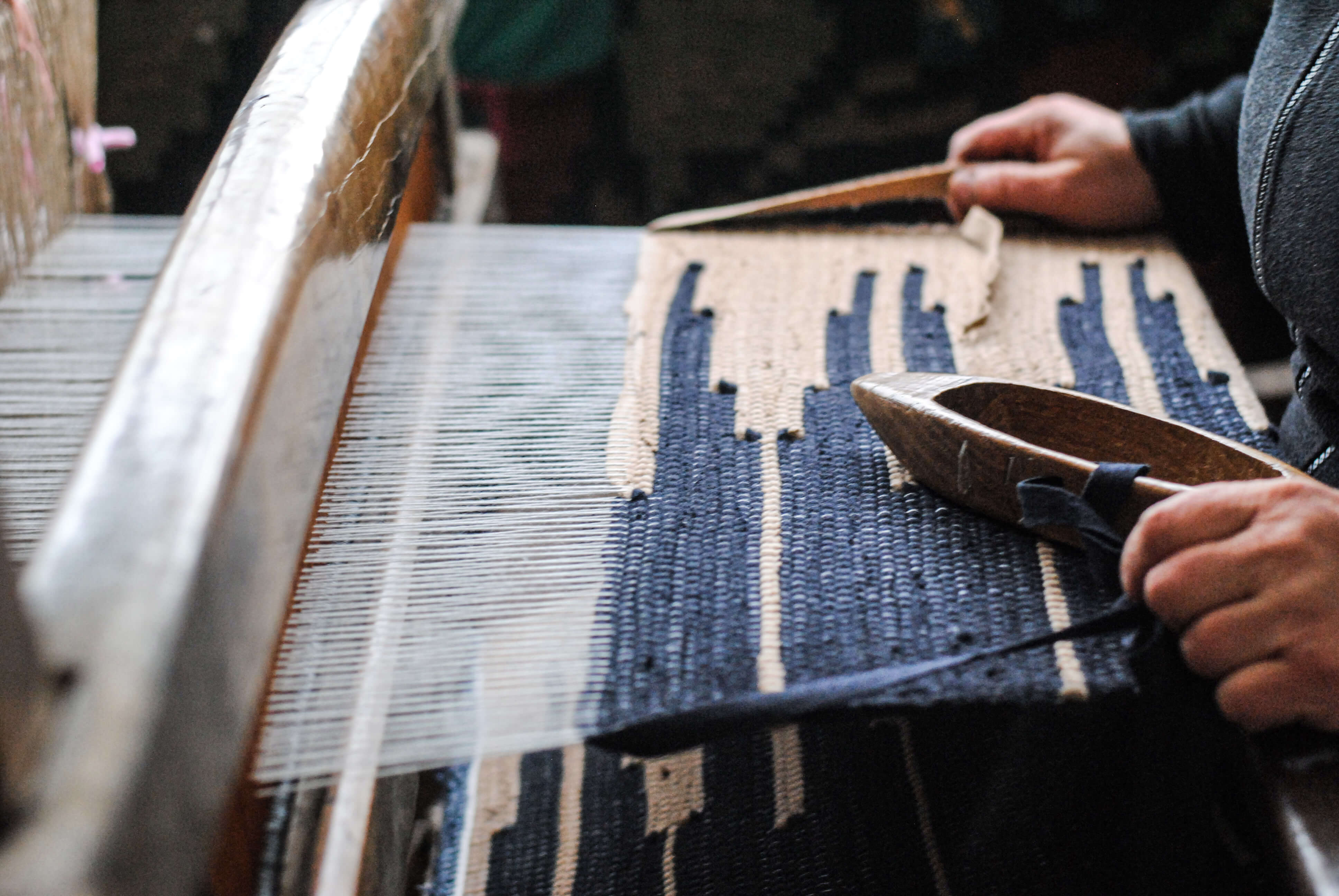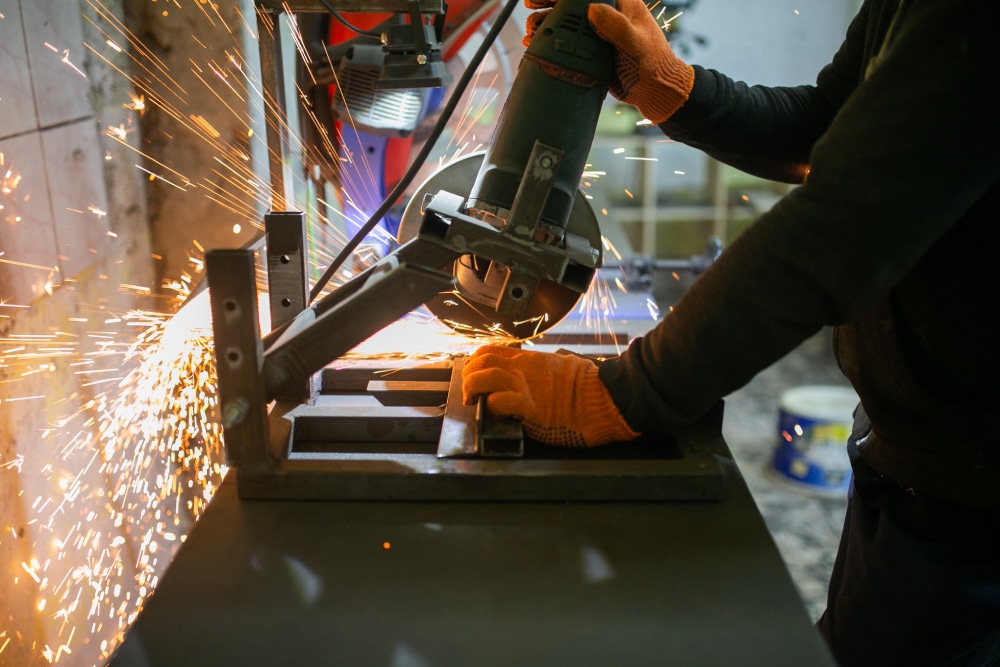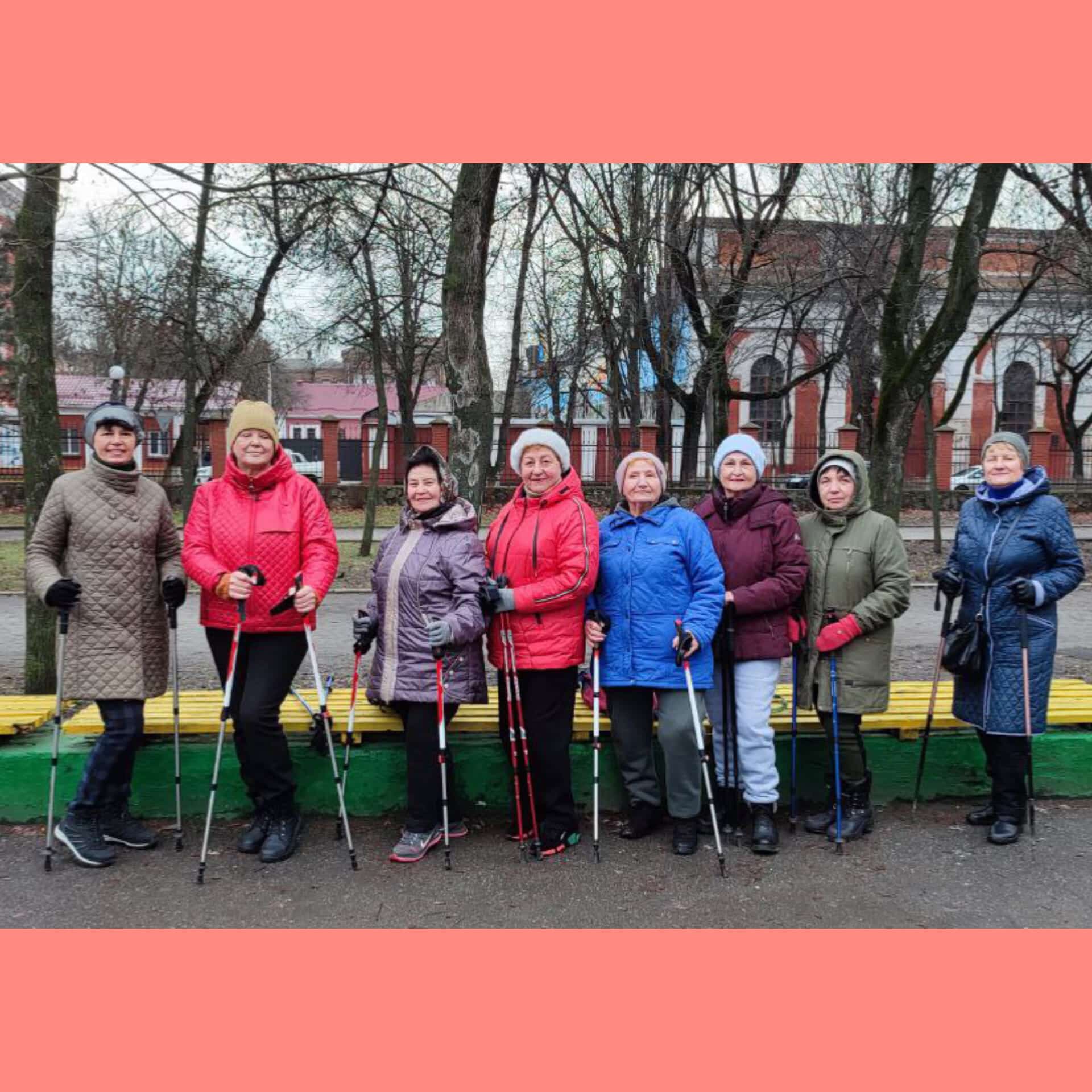In the village of Stina, which is located in the Vinnytsia oblast, a center for weaving called ‚Vereta’ has been set up. Female masters work at old looms, producing carpets, bags and computer covers. By wearing new patterns and deploying new techniques they make the modern history of the old craft.
***
On a cloudy day a man in military uniform runs across the street and jumps into a car. The man’s name is Yuriy Stepanets who enlisted in the territorial defense in the city of Vinnytsia two months back. The great war had broken out on his birthday. Although he had not had any experience before, Yuriy headed to the conscription office on the following day.
In the morning his shift of patrol duty is over. Instead of having some rest Yuriy is taking care of his business. He is the owner of the weaving workshop ‚Vereta‘. The workshop deals with trimming the leftover fabric which might otherwise have ended up in the trash.
In May 2022 Yuriy was planning to launch a center for weaving in the village of Stina which is situated one hundred kilometers (62 miles – translator’s note) away from Vinnytsia. However, the war has affected both the workshop and its owner’s life. In our piece you will learn about how the center had been operating before the war and how the latter has impacted on it.
Stina and ‚environmental experiments‘
Yuriy Stepanets stumbled upon the weaving business through his eco-activism activities. When he was a student of the Vinnytsia agricultural university twenty years ago Yuri and his friends founded the organization ‚Our Podilla‘ (Podilla is a historic region located in the west-central and south-western parts of Ukraine – translator’s note).
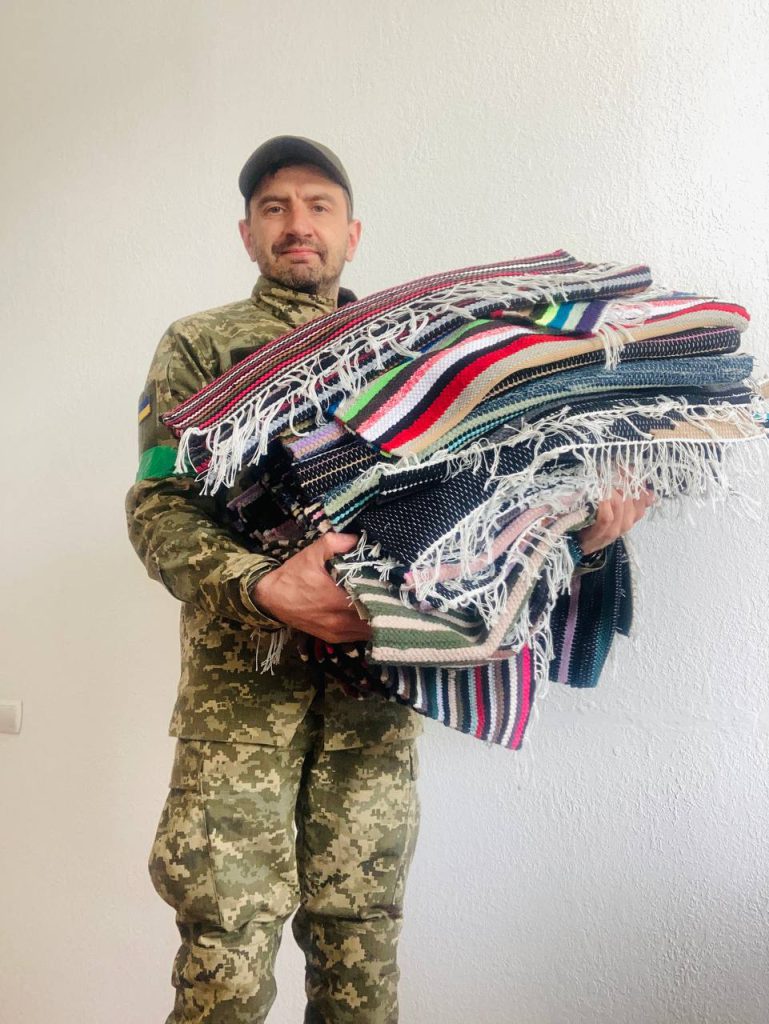
Their organization started to draw attention of the public to the problems of the environment. Educational events were held for school children who were taught to gather recycled material and set up a sorting station in the schoolyard.
In 2018 ‚Our Podilla‘ in cooperation with the Donetsk University founded one of the first stations for deep waste sorting in Ukraine that is capable of sorting 30 different types of waste.
One day eco-activists got word about the village of Stina which is famous for its landscapes, long history and preserved cultural heritage. The village lies along the river of Rusava surrounded by a hilly area. Its hidden location and fortifications may have helped the village survive Turkish and Tatar incursions as well as a siege laid by Polish troops.
Also, an ancient settlement of the people of the Cucuteni–Trypillia culture has also been found near the village. Their legacy can still be felt today as Stina has become a center for weaving in the Vinnytsia oblast. Necessary skills have been passed down to generations for many years.
With time the activists decided to buy a house in the vicinity of the village. At that time none of them were toying with the idea of taking on weaving. They were simply planning to conduct ‚environmental experiments‘ there.
‚In Poland I learnt that a public organization in this country is allowed to own a house. I thought to myself – why not do the same in Ukraine? In 2016 our organization purchased an old stone house for 10 thousand UAH (approximately 357 USD at that time – translator’s note) that was to become the eco-center ‚Stina‘, says Yuriy.
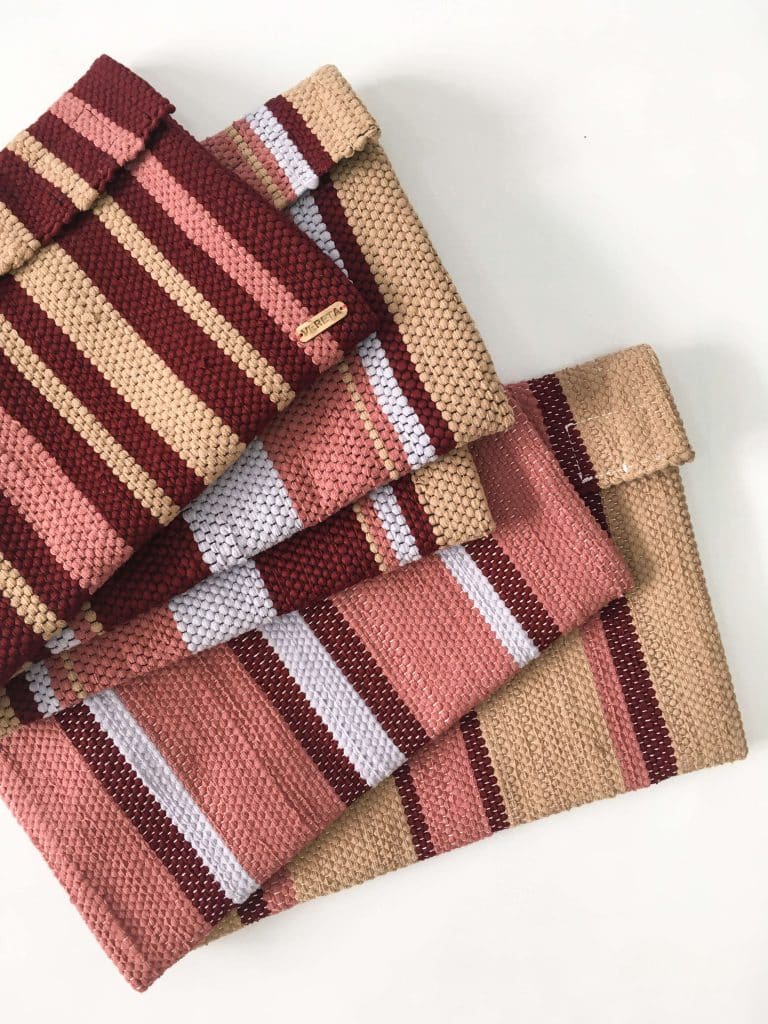
The goal of the eco-center was to attract the attention of the locals to the environmental problems and possible solutions to them as well as to draw on the experiences of local peasants. Programs for international youth exchanges we launched, traditional eco-friendly building techniques were learnt which are still popular with the locals. Their main principle lies in using manure as a construction material. This secret of our ancestors is currently gaining in popularity.
How the leftover fabrics have gotten a new lease of life
With time these environmental experiments led Yuriy to take interest in weaving, since before the activists had encountered one problem, namely that they did not have the opportunity to hand over old clothing and leftover fabrics for recycling.
Nowadays one of the most popular ways of fabric recycling is making new fine threads out of it. As a rule, these threads are of low quality, so instead rugs are made that are then sold in popular supermarkets.
‚If you shake these rugs really hard they will start falling apart into all those tiny threads that they are made out of‘, says Yuriy.
That is why the folks from Stina decided to work with the fabrics that are left over after clothing is manufactured, since normally these leftovers wide up in landfill sites. Just as in the case of plastic, it takes them hundreds of years to decompose, exerting a destructive influence on the environment.
The eco-activists thought that it was possible to give these leftovers a new lease of life. First they are cut into strips with the help of the loom and then turned into rugs. Thus the structure of this fabric does not undergo any changes with the quality remaining the same. Rugs may be used for hundreds of years.
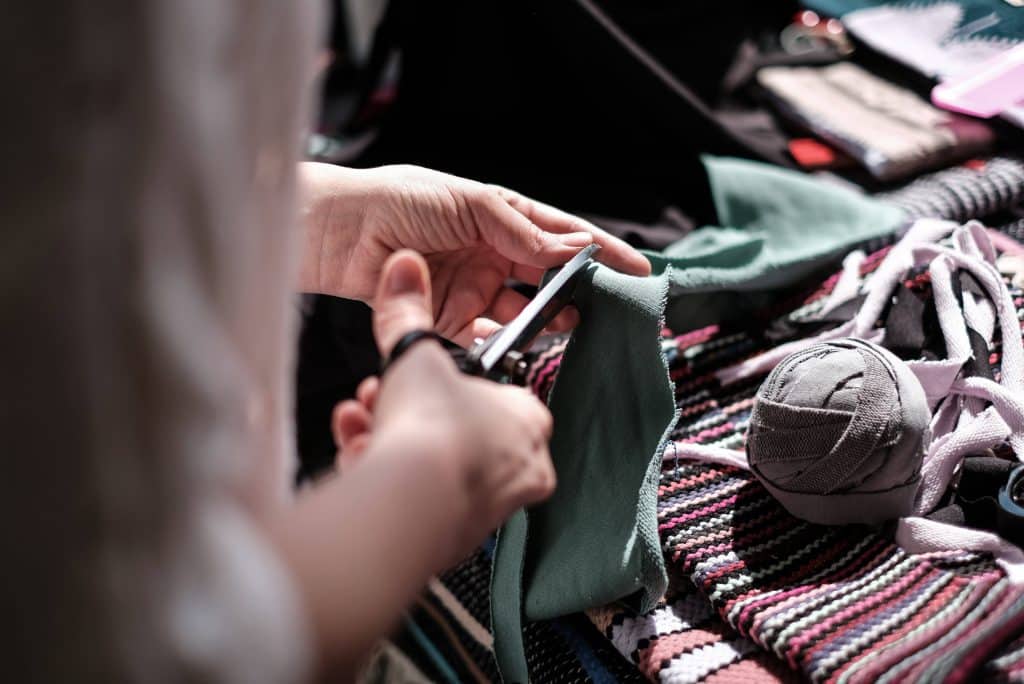
The craft of weaving is over 5 thousand years old. Woven clothing (instead of that made from leather) was worn back in the days of the Cucuteni–Trypillia culture.
Over the years the loom has undergone major changes as well as new approaches have been deployed to weaving. However, the basis of the craft has remained unchanged. Speaking of weaving, it has been popular not only in Ukraine, but also in Europe. With time traditional manufacture gave way to industrial production. For example, China and Turkey are fierce competitors of small weaving family businesses. It is cheaper to buy things in a supermarket.
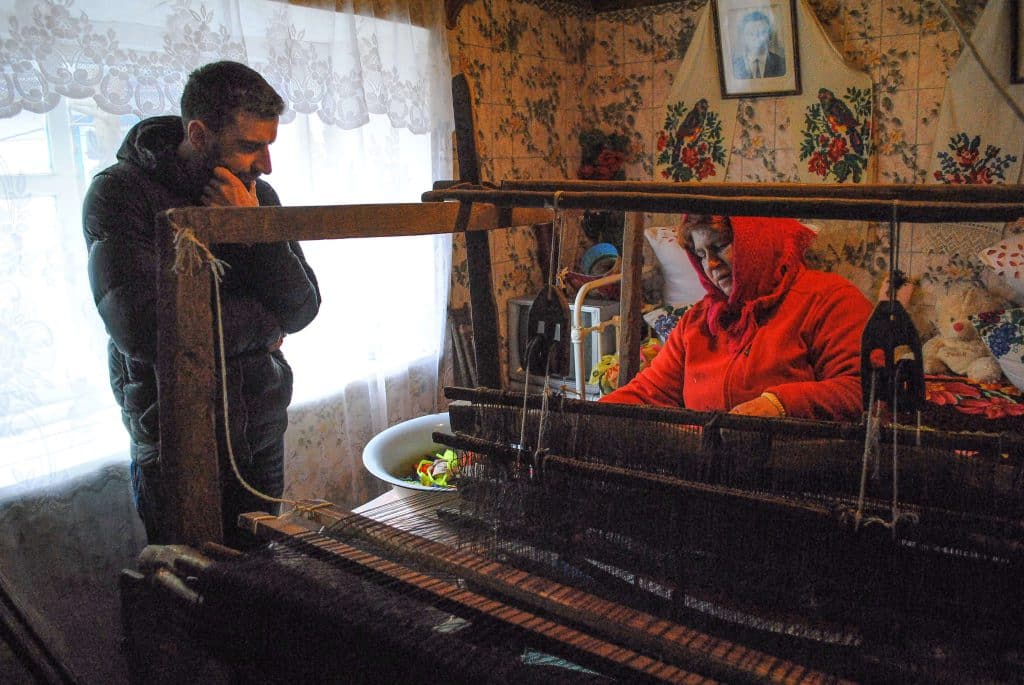
However, Stina is keeping afloat. People continue to keep looms at home. Yuriy assumes that ‚every fifth home in the village has a loom while every tenth inhabitant knows how to use it‘.
The first rug
A few years back Yuriy decided to find the village’s best craftswomen and to agree on cooperation with them.
‚I knew that there were many people in the village who still remembered the weaving tradition. The problem was to persuade them to collaborate with us, since we were something of strangers to those parts. First I found a woman who was very well conversant with the craft of weaving. I gave her materials and said that I would be back in a month. During that time she was supposed to show all her skills by making a rug. Her first rug was not of high-quality. More importantly, our work got off the ground’, says Yuriy.
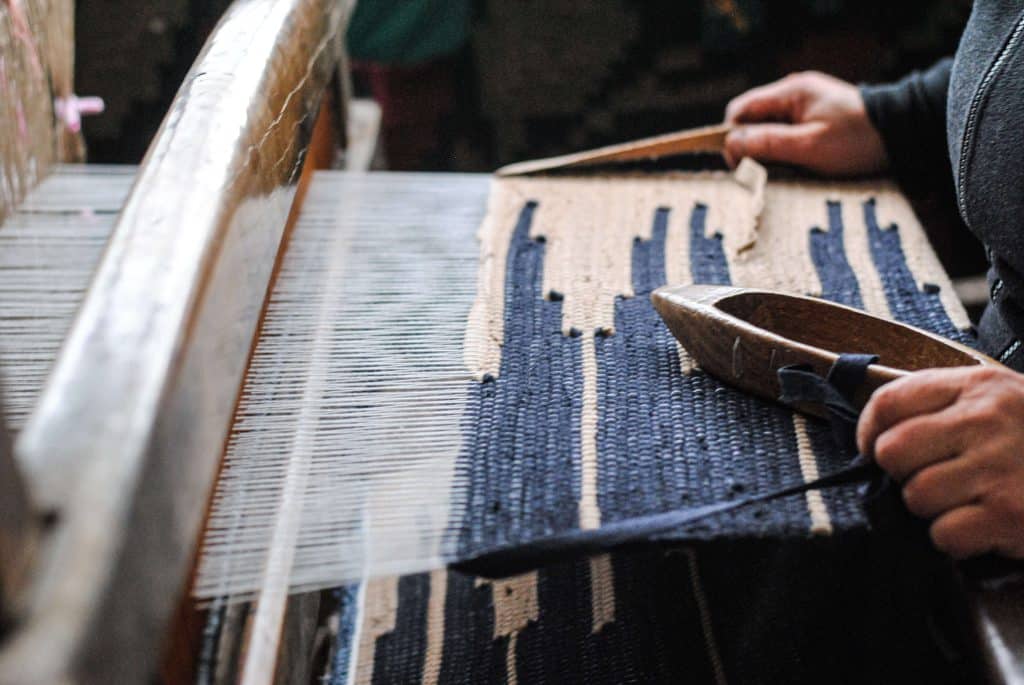
To produce rugs the center needed not only leftover fabrics, but also special threads used for the base. Yuriy was not in the know about what kind of threads he needed and where he could find them.
«I was searching on the Internet, I was asking people for advice. Our first rugs were funny since all the threads that I managed to find were pink and with sparkles’, Yuriy beams.
That was how the weaving workshop ‚Vereta‘ came into being.
The process of weaving is suspended for the holidays and during the growing season
It took a long time for the production to get rolling, since the local way of life has its own laws.
‚At first our thinking was – if we already own a house, why not provide it with a loom? People would come to us and work. However, it turned out that people in the village did not enjoy visiting other people’s homes. They said they would be working from home. Working at someone else’s house was out of the question. Also, when the growing season starts, the weaving process is suspended. The same goes for the religious holidays.’, says Yuriy.
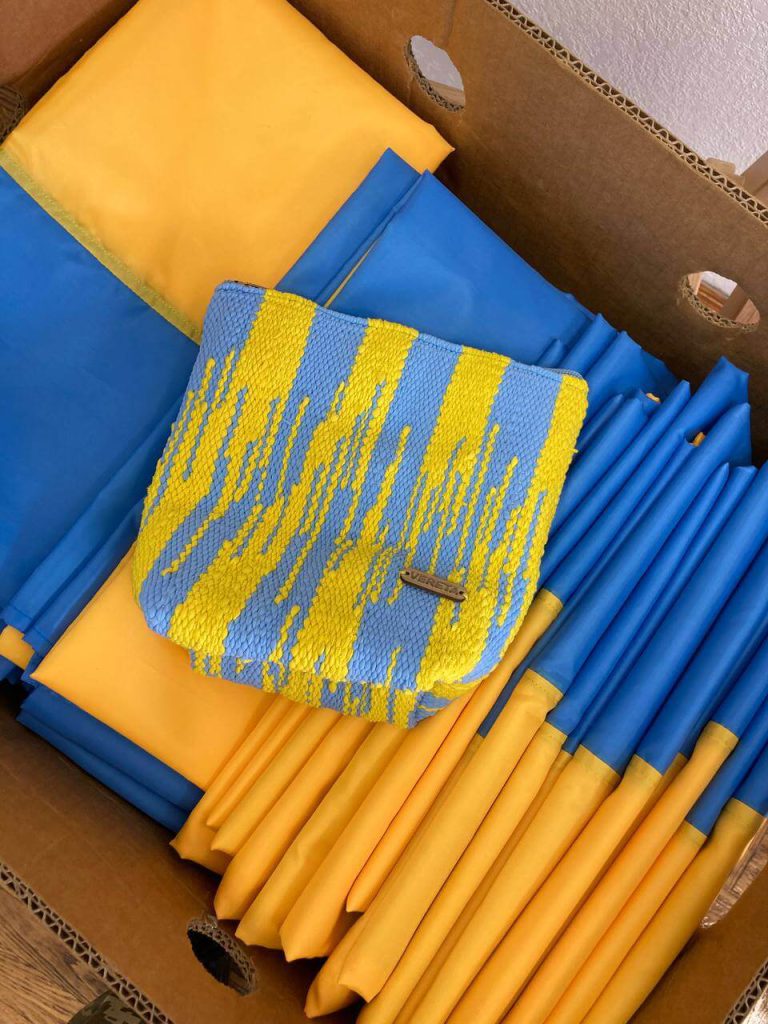
Some of the looms in the village are over one hundred years old. However, craftswomen also work at new instruments, since the old ones do not enable them to accurately fulfill clients’ orders. For example, the old looms make it impossible to produce carpets of the needed width, which is why Yuriy has bought a modern one in the Ivano-Frankivsk oblast.
One of the most important parts of the loom is the reed. This is a special tool used to separate and space the warp threads. Nowadays this tool (resembling a comb) is mainly made of metal. Interestingly, the reed of the old looms was normally made of the common reed.
The reed may be different to the touch and also differ in appearance.
Several people are required in order to prepare the loom for operation, since there is a special tool to comb threads. Oftentimes men help maintain and repair the loom.
Weaving is hard work as one has to be strong in the arms to push the weft threads into place and produce high-quality fabric.
Money as motivation
Together with his craftswomen Yuriy has also visited settlements in the Carpathian Mountains to share experience. There the team of ‚Vereta‘ drew inspiration for new ideas from local craftswomen.
For their own part, the craftswomen from Stina share their knowledge with the local youths. The promotion of weaving in the village will contribute to the development of its economy and to new jobs being generated.
,In my opinion, money may be the primary motivation, since it is thanks to this craft that one gets the opportunity to make a living and to develop. It is also of paramount importance to show that practicing traditional crafts may also be lucrative. That is why the youths may pick up these skills without feeling any concerns for the future. We are attempting to popularize weaving’, says Yuriy.
He understands that it may not be everyone’s dream to ‚surround themselves with carpets‘. Therefore, the center began to produce bags, tote bags, make-up bags, pillows and even covers for laptops. The center’s craftswomen work at looms and then the woven fabrics are sent to a seamstress working in Vinnytsia.
‚We also conduct experiments in sewing, since the material we work with is quite delicate, it cannot be just slit open or cut. First we need to think everything through and only then can we sew pieces together‘, says Yuriy.
As of now the ‚Vereta‘ team consists of Yuriy Stepanets, his colleague named Maria, 6 craftswomen and a seamstress.
‚Vereta‘ also cooperates with clothing stores and different Ukrainian brands that provide the center with leftover fabrics. After Yuriy had put in a great deal of effort while making arrangements for fabric deliveries from the first supplier, other suppliers started taking the initiative by contacting him first. Thus ‚Vereta‘ has become a socially responsible business. The center has already cooperated with the men’s clothing ship ‚Volodarka‘ and such Ukrainian brands as Papaya and ‚Tattoo Sweaters‘.
Two missions of the center
Later on Yuriy decided to extend his business by opening up a center for weaving in Stina, especially since in the house that he owned he could receive guests and conduct master classes.
‚There are two missions that the center is supposed to pursue. The first one lies in receiving guests from all over Ukraine and the world who want to live in the house and to learn the craft. The second one is about providing space for our craftswomen who can conduct master classes and share their experience’, says Yuriy.
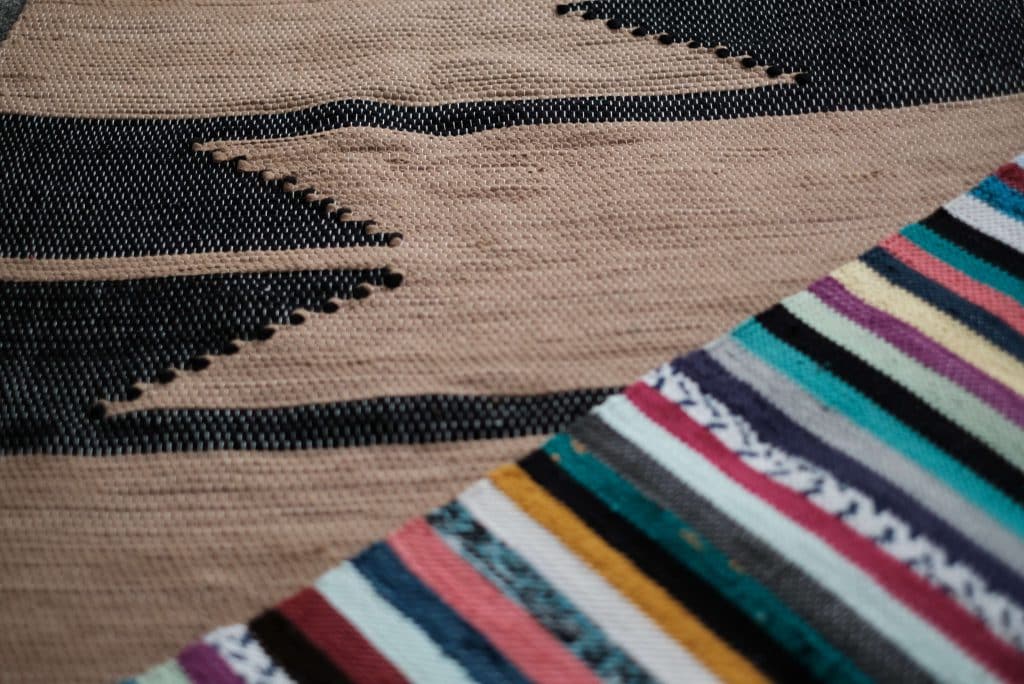
As ‚Vereta‘ began to develop, lots of people expressed their willingness to visit the village in order to watch the craftswomen working at their looms and to try their hand at weaving. To acquire news skills and have a rest these visitors were required to spend a few days in the village and have a place to spend the night.
Guests were not interested in one-day tours since they would not be able to see and try everything, especially because the village is famous for its picturesque landscapes and exquisite local cuisine. Take, for examine, the white borscht with the sugar beet, a local specialty.
Thanks to fundraising activities the team has decided to acquire another building that would accommodate up to four people. Such a house has already been found and it needs renovating.
The team has managed to raise the needed sum. Part of the money has been spent on new looms and on a sewing machine. New equipment will allow working on more complex patterns and with tougher fabrics.
Yuriy also wants to buy an overlock. The rest of the money will be allocated for the remuneration of the craftswomen.
‚ I believe in weaving and in what we do. First of all, we are an eco-responsible business and we want to mitigate the harm caused by fabric leftovers to the environment. We believe that the place of production matters since villages in Ukraine are in need of jobs. It is also about preserving the cultural heritage of traditional weaving. This cause is quite promising. We stand a chance of becoming a financially successful company that will offer benefits and generate income’, adds Yuriy.
While customizing the production, Yuriy and his team did not have the opportunity to earn money on weaving. All they could do was to break even. However, with the planned extension and modernization of the center its financial situation couldn’t but take a turn for the better.
Instead of a center for weaving – a recreation center for people affected by war
The great war has affected the plans for launching a center for weaving. At the beginning the production was halted altogether.
’On the morning of February 24 I woke up and realized that something was to be done. The following day I enlisted into the territorial defense unit. Our craftswomen started weaving camouflage nets. It was a good thing that we still had dull-colored leftovers’, says Yuriy.
Subsequently ‚Vereta‘ started to resume its operations. Now the center is planning to make it to the international market to sell their products. Yuriy wants to establish contact with Poland. ‚Vereta‘ has also been contacted by an internet store from Chicago. The center’s products will also be represented at a festival in Florence.
‚Vereta’ weaves Ukrainian flags. The plans to set up a center for weaving have not been abandoned. Its future functions may differ from the original ones, though.
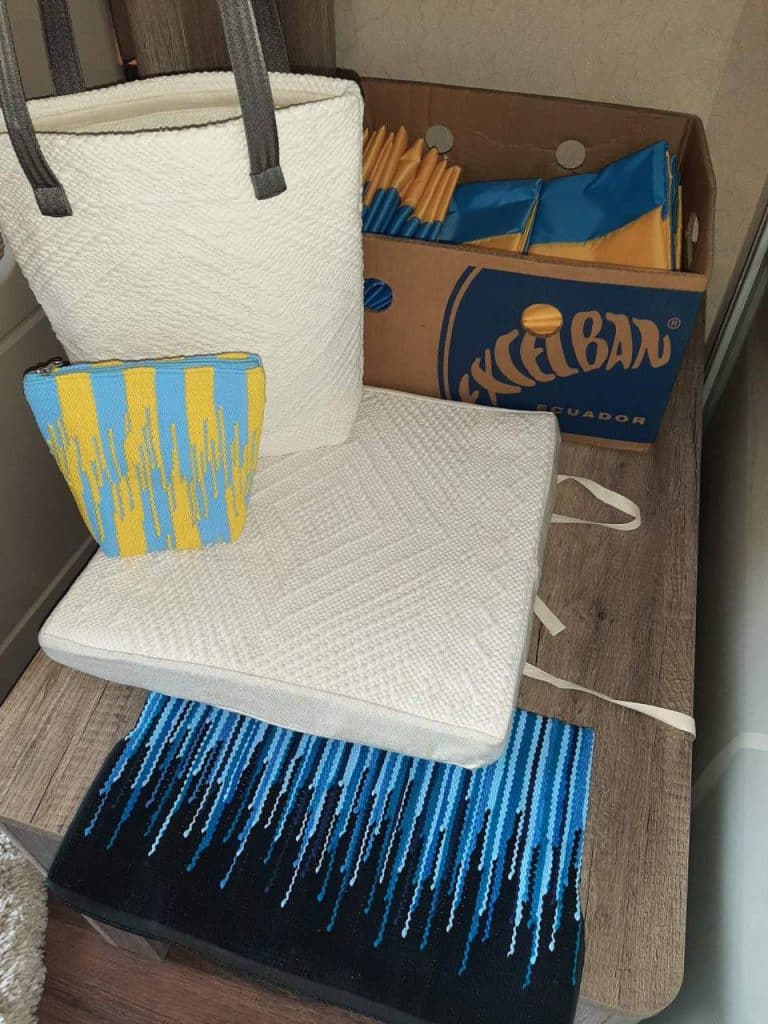
‚Someone may come here from town (where life is difficult) to recharge their batteries, spend time in nature and have a rest by working at a loom‘, says Yuriy.
The man feels confident that because of the war the style of weaving will change and modernize with time and that patterns will tell a new story.
‚The contemporary generation has its own style of weaving and sewing. The youths are inclined to experiment and to make their mark on it‘, says Yuriy. I have no doubt about a great future of weaving lying ahead. Everything that is valuable to people will live on’.

